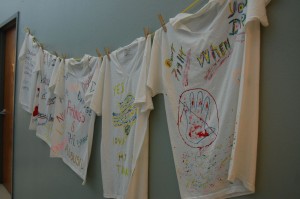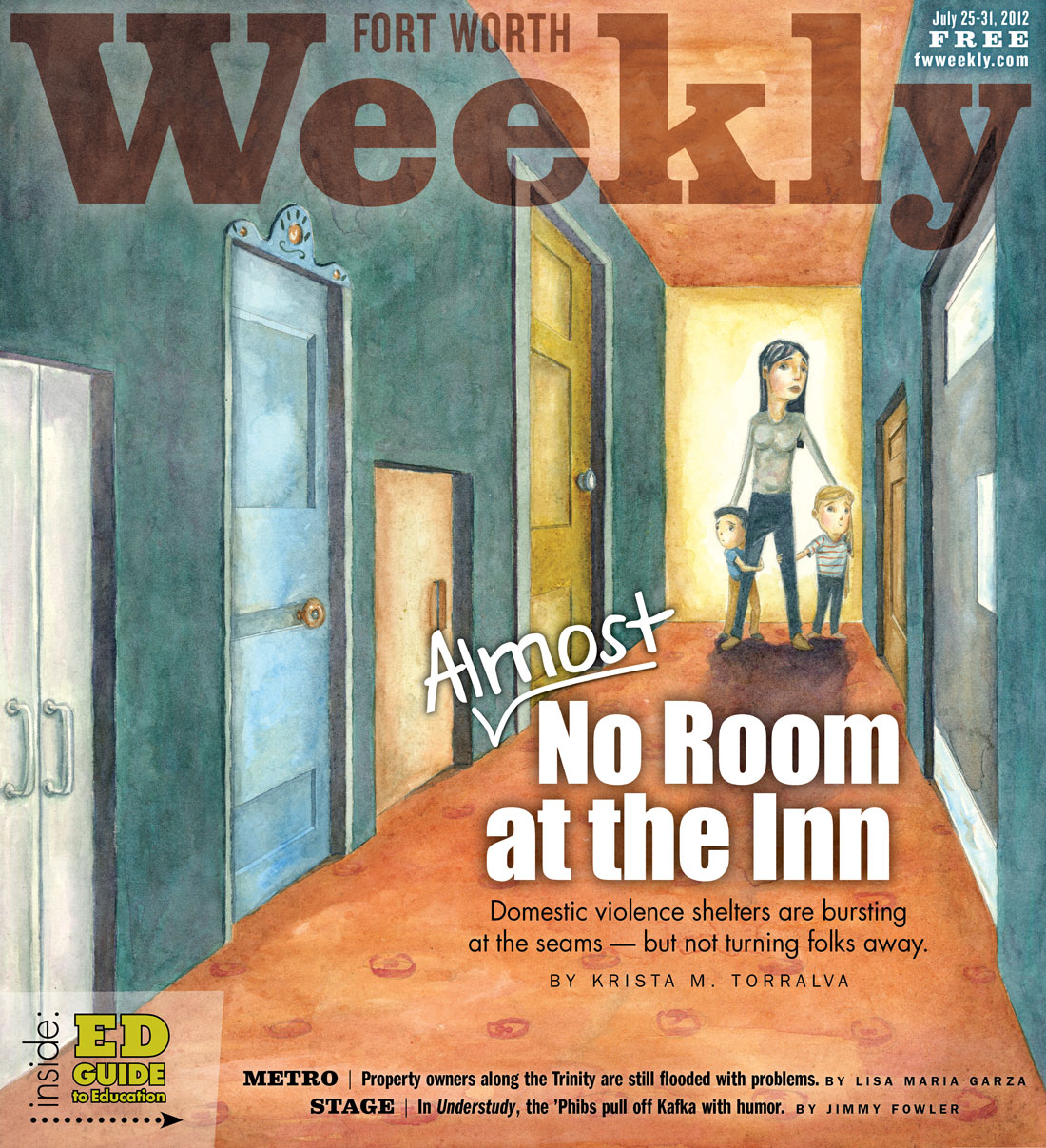For six years the Dallas woman suffered physical abuse at the hands of her partner. Now he was threatening to kill her or her family if she reported him to police.
Desperate, she called a domestic violence shelter in Dallas in June. The shelter had bad news — it was full, and so was every other shelter in Dallas. The good news: SafeHaven of Tarrant County was able to make room for her, despite similar overcrowding there.
For nearly four months, SafeHaven and other Texas shelters have teetered between being full and more than full, with staffers scurrying to find options so that no one has to be turned away. Family violence victims are pouring into the shelters at record rates this year, leading to overcrowding and stretching shelter resources.
Shelter occupancy traditionally goes up in summer months when women with children find it easier to leave home. But this year, the rush started earlier than usual and at rates that have not only filled the shelters, but kept them full.
This is the worst overcrowding SafeHaven has seen since it opened in 2006, said Mary Lee Hafley, SafeHaven president and CEO. To handle the load, SafeHaven in May began lining the walls of its Arlington gymnasium with cots.
Richard Bruno, a sergeant in the Fort Worth Police Department Domestic Violence Unit, said reports of domestic violence are up by more than 25 percent compared to this time last year.
“We are on pace to exceed 2011 considerably, for factors we don’t know,” he said.
Across the state and nation, shelters are running out of room, and calls to the National Domestic Violence Hotline have increased significantly since the recession started in 2008, said Angela Hale, spokesperson for the Texas Council on Family Violence and the National Domestic Violence Hotline.
Shelter directors and police can pinpoint some of the factors causing the influx. Domestic violence numbers are increasing as the recession deepens. And many shelters have responded by beefing up their programs to inform the public about their services — which in turn brings in more clients. However, some shelter officials feel that there are other factors involved that they don’t yet understand — including an increase in the numbers of women with larger families who are seeking help.
Making it even tougher on the agencies that serve such victims is the financial crunch: While client loads have gotten heavier, state funding has barely budged. The state appropriated $51.4 million for family violence shelters and resource centers in 2011, not even a one percent increase over the $50.9 million appropriated in 2009.
“So there is an increased number of people [being] served with the same amount of money,” Hale said.
********

When the shelter doors lock behind a woman escaping domestic violence, SafeHaven Communications Coordinator Annie Potasznik said, she almost always sees a look of relief on the woman’s face.
The next thing, after safety, that the woman wants is privacy, Hafley said. “When you’re a victim of domestic violence, you’re pretty much consumed with shame, and your privacy becomes even more valuable to you,” she said.
In order to honor families’ privacy, SafeHaven tries to give each family a separate room. Lately, however, the staff has had to ask women and families to share rooms and, in some cases, to take cots in the gymnasium alongside 10 or 20 other women.
SafeHaven sheltered more than 2,500 women and children in 2011. The staff expects to exceed that amount significantly in 2012. Information from The Family Place in Dallas shows that their client load is up by about 13 percent over last year at this time.
SafeHaven has become more dependent on volunteers, freeing the shelter from having to hire more staffers.
“We still need any kind of volunteer, clothing, and furniture donations,” Potasznik said.
Overcrowding is nothing new at The Crisis Center in Odessa. The shelter has been at or above capacity for three years, executive director Chuck Hornung said.
About five years ago Hornung said he saw the demographic for the typical victim begin to change from a woman in her 30s or 40s with no more than two kids to women in their 20s with three or four kids.
In order to accommodate more and larger families and more clients overall, the staff opted to furnish rooms with bunks instead of traditional beds. For basic necessities, the shelter relies on donations from the community.
Since the overcrowding started, The Crisis Center board has talked about the dreadful possibility that they may not be able to house every victim — but somehow they are always able find places for everyone.
“I always say, ‘If you don’t believe in miracles, I invite you to spend a few days at The Crisis Center,’ ” Hornung said.
Shelter staffs across the state are likely hoping for similar miracles, as they deal with overcrowding.
“It’s concerning that so many people are seeking shelter but also that the [intensity of the] violence seems to have gone up,” said Noel Busch-Armendariz, director of the Institute on Domestic Violence and Sexual Assault at the University of Texas at Austin.
More people in Texas were killed in family violence incidents in 2010 than in any year since 2005. In 2010 the Texas Council of Family Violence recorded more multiple-death incidents than usual, meaning not just partners but children or other family members killed, Hale said.
In some cases, family violence fatalities have claimed victims beyond the immediate family, including police officers.
Domestic dispute calls are among the most dangerous that police handle because officers never know what they’ll find, Bruno said.
In 2010 Arlington Police Officer Jillian Michelle Smith responded to a report of domestic violence from Kimberly Deshay Carter.
While Smith was at Carter’s apartment, Carter’s ex-boyfriend, Barnes Nettles, returned with a gun and began shooting. Smith died shielding Carter’s 11-year-old daughter. Nettles then fatally shot Carter and himself.
********












